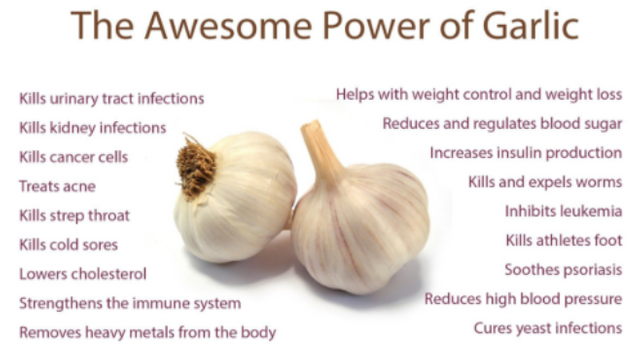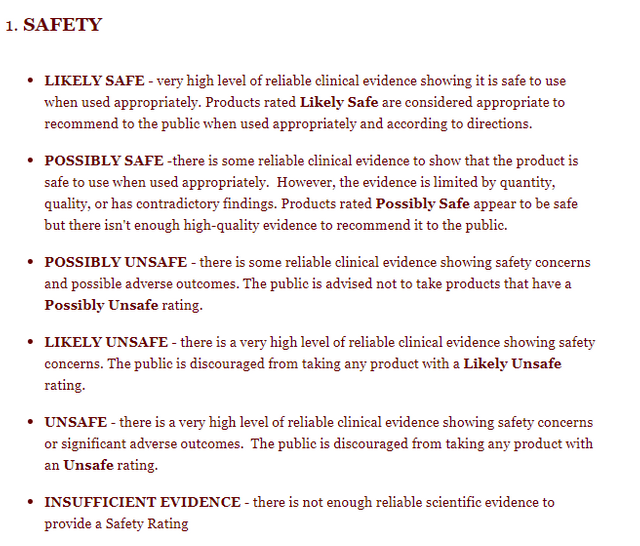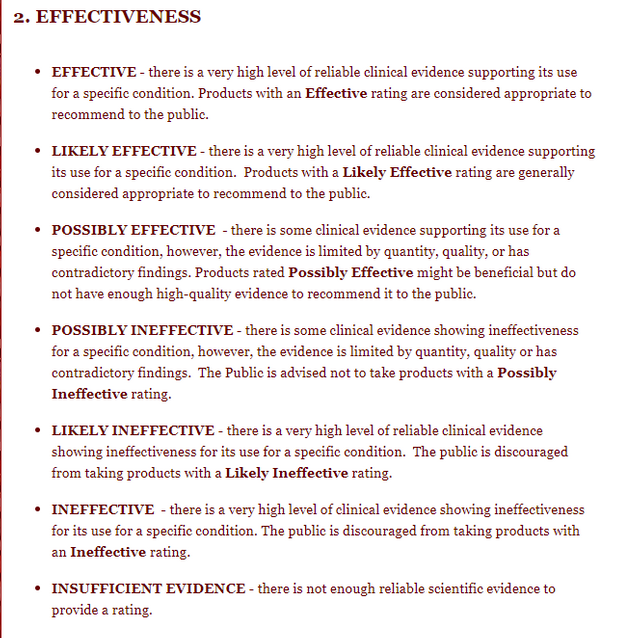Not everyone does their due diligence when they visit health websites - especially when they are reading or researching claims about herbal medicine. In fact, most people who visit health websites believe that everything they have read on that site is absolutely true and that if it weren't true, someone would have called them out on it and it would have been removed.
Does that match you? I'll bet it does.
I am here to tell you that is a bad assumption. There is no "internet police" to check if claims are true or false. Anyone can create an infographic. Even you. There are tons of apps to do so. Website or blog writers - many who are non-medical - get the information for their post from the same place you do. Oh, don't get me wrong - there are reputable sites who do their research before they write. But the rest of them gather their information by surfing the web just like you do. The internet is their encyclopedia. When they see enough sites saying the same thing, they assume it must be true and then they publish it as fact.
This is how falsehoods get spread around. When a blog writer needs an infographic, alas there's one readily available with a quick Google or search on Pinterest. These writers don't bother to check the truthfulness of what is listed on the infographic. They too figure it wouldn't be on the internet if it wasn't true.
Although I could have picked anything from the long list of herbal medicines, I chose Garlic because the claims for Garlic vary far and wide. It is a very popular supplement with claims that it cures everything from the common cold to the Plague.
A quick Google using my title "False Claims About Garlic" brought me 267,000,000 results and of those, the first seven pages of 100 results gave me websites that copied posts about Garlic from other websites that made claims about Garlic. Most of the ones I checked provided a Source name with no link. Only a very few provided the actual link back to where they got their information - which turned out to be a website whose writer got their information from surfing the internet looking for facts that were repeated by a few sources which gave them enough validity make their post.
As you can see, the problem with websites posting whatever claims they wish about Garlic is that it inspires other website owners to make their own posts in support of the claims - especially those with large readerships. It is rare that those websites use their audience to dispute the claims. When their readers come to their website, they read the claims, share the post, or repost it on their own blog, so that before you know it, the falsehood has been publicized so many times, that it becomes Fact in popular opinions.
I am reminded of something President Trump said as a deflection when something outrageous comes out of something he said - He said: "I said this in my speech last week, now everyone is saying it, so it must be true." As usual, he missed the point. People are repeating what he said, not because they believed it to be true, but because they couldn't believe it. But as usual, he took it to say that his words were proven true.
But I digress, sorry.
When soft claims are made - for example, that Garlic has been used to reduce lead in the blood, they don't include the information that a particular dosage was used three times a day for 4 weeks to reduce lead in the blood, 
There are certain infographic authors who took a broader view of that. So they used a "blanket statement" and stated that Garlic "removes heavy metals."
It did remove heavy metals, but just one heavy metal - "Lead" - and it happened over a period of four weeks at a particular dosage, but there's not enough room on an infographic to show that. So the claim "removes heavy metals" ended up being the final choice to put on the infographic. Readers who have health concerns regarding copper, lead and other metals will assume that Garlic is good for "all heavy metals."
OR how about the study that said treating for 9 to 18 months with Garlic "Oil" "might improve" oxygen levels for those suffering from shortness of breath "associated with Liver Disease"
As you can see, it did not say regular COPD from lung disease. It said shortness of breath associated with hepatopulmonary syndrome - Liver Disease.
Ignoring what a study says, there are some infographic authors who go for the outrageous. That's why infographics like this one are dangerous for readers to believe, especially when using strong words like Garlic "kills", "cures", and "inhibits." 
One look at these claims should be a red flag to the reader when they see the word "kills" so often. However, readers don't want to waste time researching or doubting the claims of an infographic or a website. They are looking for results - positive results.
When readers see a new graphic, their first instinct is to share it to Pinterest. I am not kidding you. If you put Garlic in the Pinterest search box, you are going to get sticker shock with the number of results. It's because sharing and re-sharing makes people believe that what they read is true.
WebMD is a respected health website, and like many reputable health websites, they use these two rating scales to show readers the right or wrong of the supplement's claims.

The rating scales are important because the supplement (and its claims) are given a rating based on whether there is some or any scientific proof. In other words, they did the homework for the reader. Other reputable websites would be Mayo, Johns Hopkins, Healthline, and National Institute of Health - which is where I hang out the most.
The National Institute of Health has over a million studies posted for all subjects but when I searched for False Claims About Garlic, I got 1745 results. ![Search results NIH.png]
( )
)
Sifting through them to see if any of the information on the above infographic could POSSIBLY be true took me about an hour. Specifically, I looked for claims that Garlic "kills" urinary tract infections, "kills" kidney infections, "kills" cancer cells, "kills" strep throat, "kills" cold sores, and "kills and expels" worms.
The result: There was LITTLE to NO evidence that any of these claims were founded. Most of the results said that there was some science to back up the "initial claims" because it is the Allicin in Garlic that is effective, but the final result was that they couldn't sanction that Garlic was effective for the use they were studying.
But authors and infographic creators take the words "some science" and "initial claims" and "the Allicin in Garlic is what is effective" - they took those words and gave themselves a free license to make the claims about Garlic in a positive light - that it DOES what they said it would do.
They get away with it because they are relying on "language." Language is when a study or a results says "more studies are needed," or "there isn't enough science to prove this is a fact," or "the dosages would have to be adjusted to a dangerously high dose to make the claim valid."
There are several objectives for infographics creators:
1 - to make sure they use a good eye-catching picture of the herb,
2- leave enough space after applying the picture to write their eye-catching claims on the graphic template
3 - make sure the infographic isn't bare looking - i.e. use up all the space
4 - make at least one claim that no one else has ever made up to that point - with or without proof - so their infographic goes "viral."
Conclusion: If you are a frequent health website visitor, please don't believe everything you have read until you have visited at least three other professional websites that are in agreement. Thank you for reading my first post on Steemit!
Hey there @awordlover, welcome to STEEM. If you join @schoolofminnows, you can receive votes for free.
1. Your post will appear in post-promotion on the discord.
2. Your posts will also get featured on the school of minnows account on steem
https://steemit.com/@schoolofminnows
3. You get votes from other members.
4. The whole thing is FREE.
To join follow this link:
https://steem.host/connect/steempunks
Downvoting a post can decrease pending rewards and make it less visible. Common reasons:
Submit
hi lanmower, I went to your link and started to complete the process. However, it requires my password and posting key which I was given to understand was not to be shared. Another requirement was to give you the authorization to manage the operation of my feed. I am new here. I will have to get my feet wet the old fashioned way. Thanks for the offer. If I change my mind. or if it turns out that I was supposed to give you that authorization along with my password, then I will try again. thank you.
Downvoting a post can decrease pending rewards and make it less visible. Common reasons:
Submit
Congratulations @awordlover! You have completed the following achievement on the Steem blockchain and have been rewarded with new badge(s) :
You can view your badges on your Steem Board and compare to others on the Steem Ranking
If you no longer want to receive notifications, reply to this comment with the word
STOPVote for @Steemitboard as a witness to get one more award and increased upvotes!
Downvoting a post can decrease pending rewards and make it less visible. Common reasons:
Submit
Cool! Thank you
Downvoting a post can decrease pending rewards and make it less visible. Common reasons:
Submit